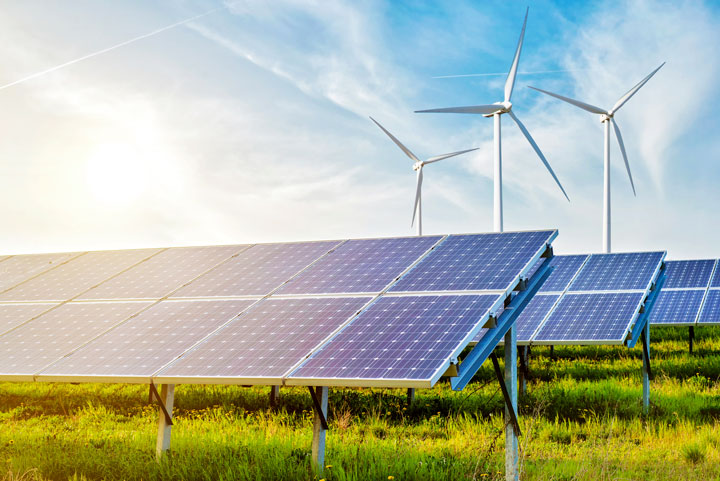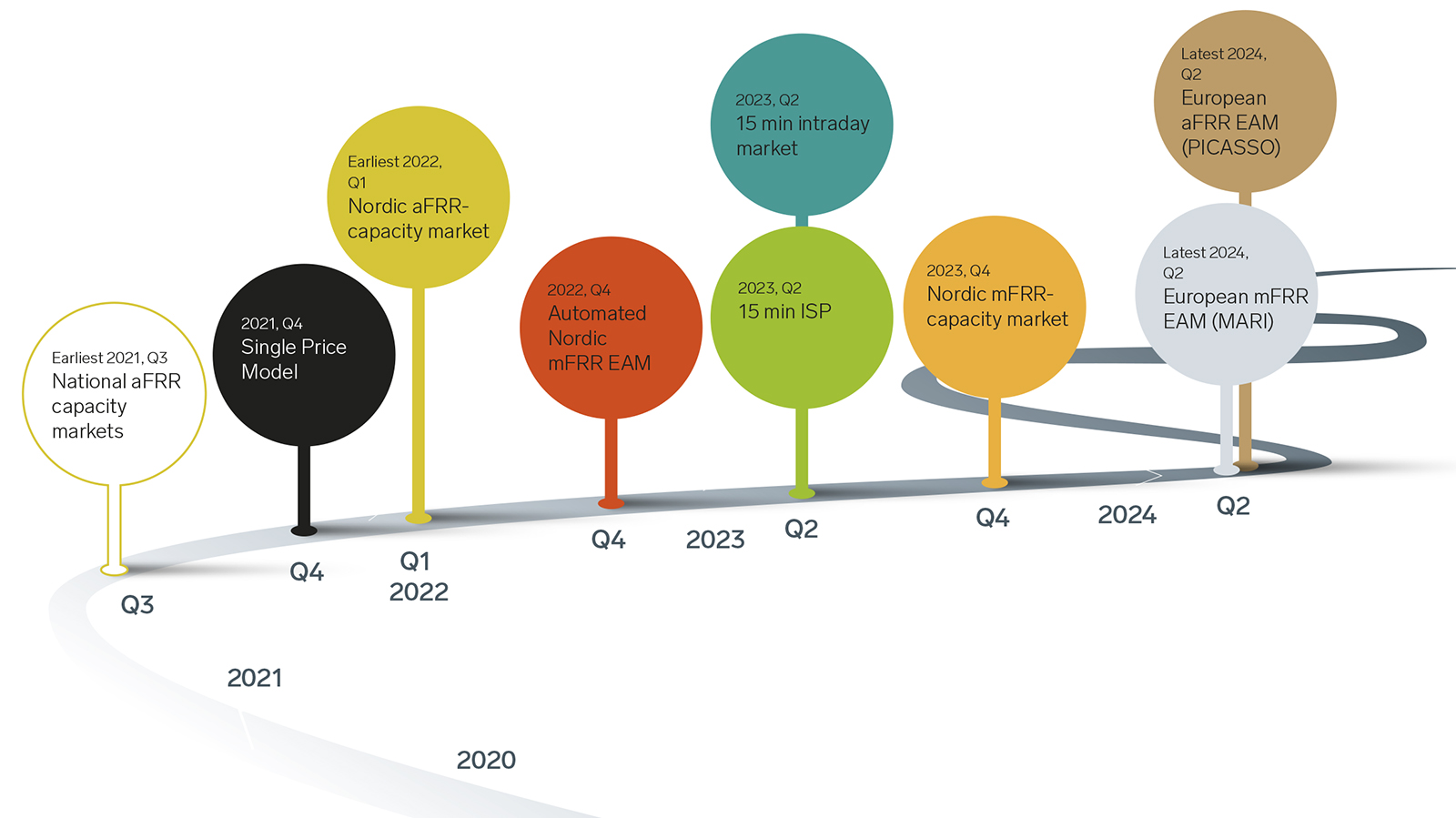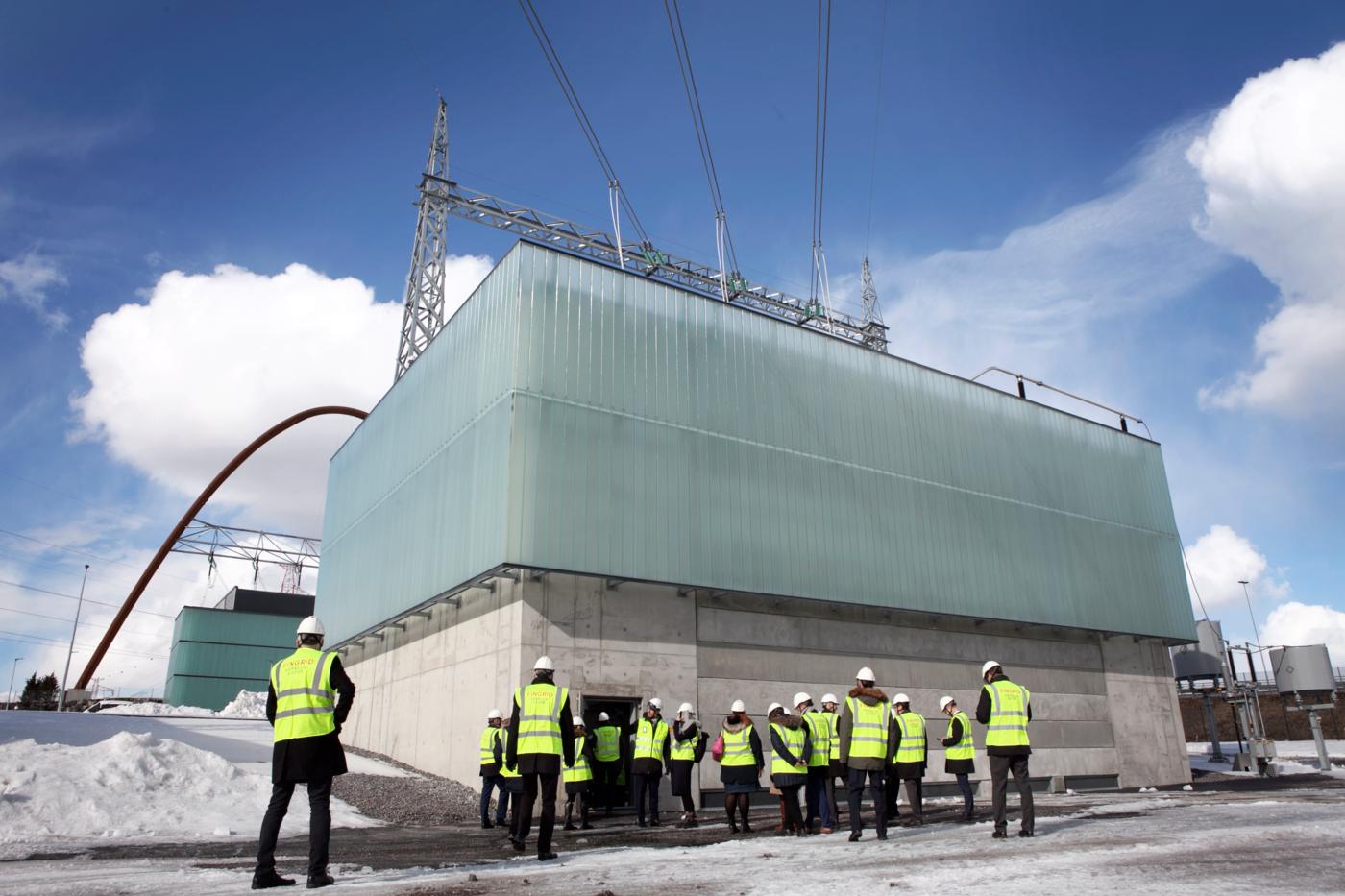What is inertia?
Usually in physics, inertia refers to the resistance to change. Electricity grid inertia refers to the kinetic energy in the electricity grid. This energy is contained in generators and motors at power plants and factories which rotate at the same frequency as the electricity grid. The rotating machines’ mass produces inertia for the electricity grid.
Inertia is a good thing in the electricity grid. In an alternating current network, the changes in frequency show how well-balanced electricity consumption and production are at a given moment. When one changes, the frequency changes, but inertia slows this change. The differences between consumption and production appear smaller and more slowly in the frequency the more inertia there is.
Why is inertia decreasing?
Lots of energy from renewable energy sources is currently entering the electricity grid and replacing traditional electricity production from condensing power plants. Wind and solar energy are connected to the grid without any rotating mass. Although a wind turbine also contains a rotor, this is not seen in the same way as a mass that rotates at the same frequency as the grid, which is the case in traditional power plants. The reason for this is that there is usually a frequency converter between the wind turbine and electricity grid. The rotating mass’s kinetic energy is not automatically transmitted to the electricity grid through the converter in situations of frequency change. At traditional power plants, such as a nuclear power plant, there is a large amount of rotating mass directly connected to the electricity grid, which therefore increases grid inertia.
Inertia also decreases in situations wherein lots of electricity is imported to the Nordic countries via direct current connections and this is used to replace electricity produced by traditional methods.
What are the consequences of decreasing inertia?
When inertia decreases, sudden changes in frequency caused by a change in electricity consumption or production are faster and larger. This means that it is more difficult to keep the frequency within its normal range of variation. If, for example, a high-power power plant is disconnected from the grid during a situation of low inertia, there is a danger that the frequency will drop too quickly, and radical measures will be employed to try to rectify it. This means in practice that electricity consumption will be rapidly cut from a large area. This is something we want to avoid during normal disturbances in the grid, such as the disconnection of a single power plant or transmission line due to a fault.
How can we solve the problem?
Currently, in a low-inertia situation, frequency changes are managed by limiting the magnitude of the possible change in frequency. In practice, last summer this was achieved by reducing the production power of the largest power plant in the Nordic electricity network, the Oskarshamn 3 nuclear power plant in Sweden, by 100MW as inertia fell too low.
In the future, the aim is to implement very fast activated reserve power, which would activate in the event of a potential fault. This is a better way to solve the situation of low inertia than the method we currently use, as reserve power is only activated if a fault occurs. In current practice, the power plant’s power is reduced as a precaution, even if ultimately no fault occurs while inertia is low.




